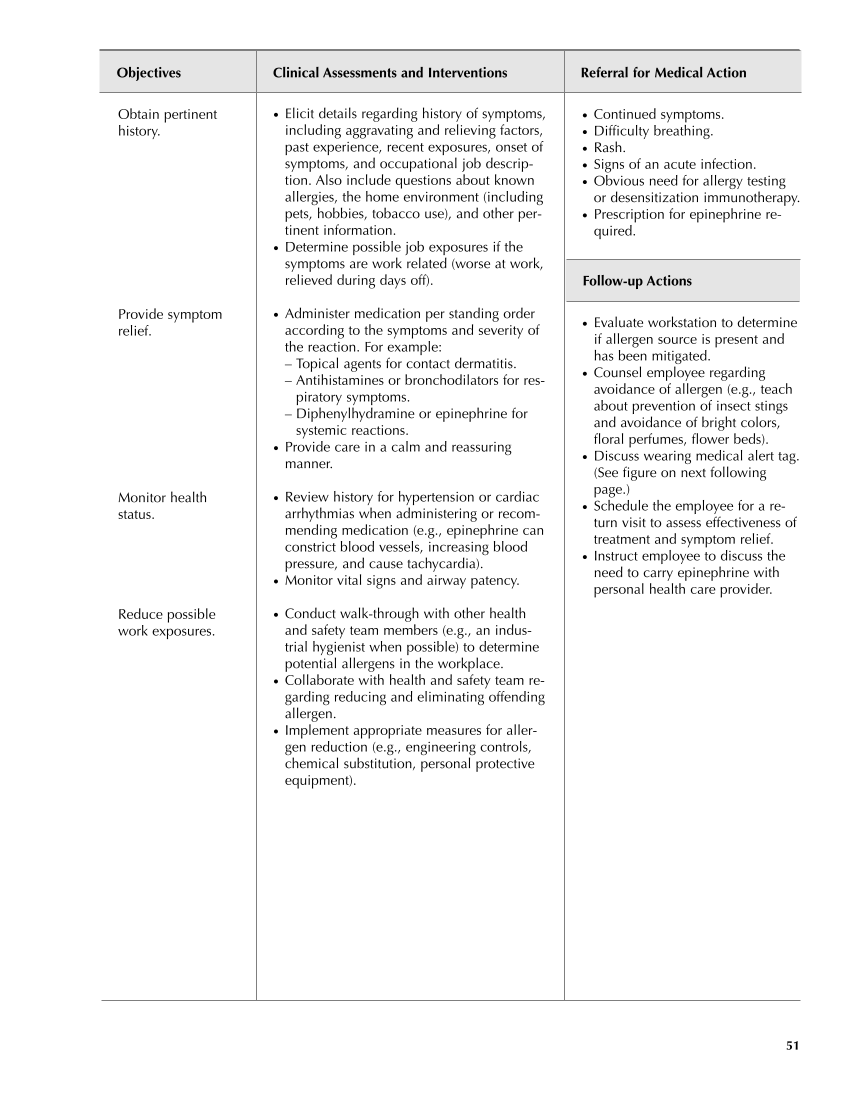● Continued symptoms. ● Difficulty breathing. ● Rash. ● Signs of an acute infection. ● Obvious need for allergy testing or desensitization immunotherapy. ● Prescription for epinephrine re- quired. Follow-up Actions ● Evaluate workstation to determine if allergen source is present and has been mitigated. ● Counsel employee regarding avoidance of allergen (e.g., teach about prevention of insect stings and avoidance of bright colors, floral perfumes, flower beds). ● Discuss wearing medical alert tag. (See figure on next following page.) ● Schedule the employee for a re- turn visit to assess effectiveness of treatment and symptom relief. ● Instruct employee to discuss the need to carry epinephrine with personal health care provider. 51 Obtain pertinent history. Provide symptom relief. Monitor health status. Reduce possible work exposures. ● Elicit details regarding history of symptoms, including aggravating and relieving factors, past experience, recent exposures, onset of symptoms, and occupational job descrip- tion. Also include questions about known allergies, the home environment (including pets, hobbies, tobacco use), and other per- tinent information. ● Determine possible job exposures if the symptoms are work related (worse at work, relieved during days off). ● Administer medication per standing order according to the symptoms and severity of the reaction. For example: – Topical agents for contact dermatitis. – Antihistamines or bronchodilators for res- piratory symptoms. – Diphenylhydramine or epinephrine for systemic reactions. ● Provide care in a calm and reassuring manner. ● Review history for hypertension or cardiac arrhythmias when administering or recom- mending medication (e.g., epinephrine can constrict blood vessels, increasing blood pressure, and cause tachycardia). ● Monitor vital signs and airway patency. ● Conduct walk-through with other health and safety team members (e.g., an indus- trial hygienist when possible) to determine potential allergens in the workplace. ● Collaborate with health and safety team re- garding reducing and eliminating offending allergen. ● Implement appropriate measures for aller- gen reduction (e.g., engineering controls, chemical substitution, personal protective equipment). Objectives Clinical Assessments and Interventions Referral for Medical Action
Purchased from OEM Press by (ge corporate access). (C) 2013 OEM Health Information, Inc. All rights reserved.












































































































































































































































































































































































































































